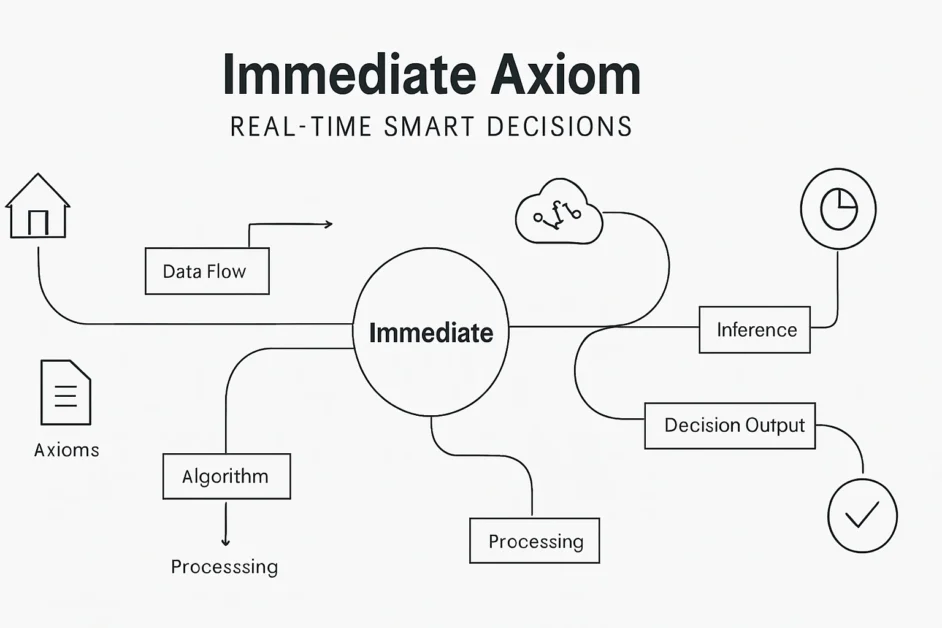Introduction
The explosive growth of AI — from chatbots and virtual agents to large-scale language models — is placing enormous demand on compute infrastructure. Inference, the step where models generate outputs given inputs, is becoming a bottleneck both in cost and speed. Enter Tensormesh: the San Francisco-based startup that just raised $4.5 million in seed funding to tackle this very challenge. Yahoo Finance+3TechCrunch+3FinSMEs+3
In this article, we’ll explore how Tensormesh’s approach works, what’s driving its adoption, why the timing is critical, and what this means for the future of AI infrastructure.
What is Tensormesh and What Problem Does It Address?
The Inference Bottleneck
When a model finishes training and goes into production, it must respond to requests in real-time or near real-time. That’s called inference. For large models (e.g., LLMs), each inference often requires heavy GPU or accelerator time, large memory consumption, and redundant computations. Over time, especially with growing conversation context or “agentic” AI systems (those that act autonomously over time), the compute costs and latency can spiral.
Tensormesh identifies that many inference systems discard intermediate data (such as key-value caches) between queries, forcing repeated work. Their insight: what if you retain and reuse those intermediate states rather than starting fresh each time?
Tensormesh’s Solution
Tensormesh builds on academic research and the open-source project LMCache (which has 5 K+ GitHub stars) and commercialises that idea. tensormesh.ai+1 Their key innovations include:
-
A distributed key-value (KV) caching layer that stores intermediate model states instead of discarding them. Yahoo Finance+1
-
Software that works across storage tiers (GPU memory, system memory, SSD/NVMe) to optimize where and how cache lives. tensormesh.ai+1
-
Compatibility with enterprise deployment: cloud-agnostic, runs on existing infrastructure, gives full control of data and environment. tensormesh.ai+1
In simpler terms: Instead of each request making the system redo everything, Tensormesh enables the system to “remember” what it already processed, reuse it, and thus reduce work and cost.
Why It Matters
-
Cost savings: Tensormesh claims up to 10× reduction in inference cost by reusing caches. Yahoo Finance+1
-
Higher throughput: With less redundant work, inference can run faster and handle more queries per GPU hour.
-
Latency reduction: For interactive applications (chat, agents), quicker responses matter; caching helps.
-
Better utilization of hardware: GPUs are expensive. By squeezing more from existing hardware, it extends their value.
The Funding and Company Launch
On October 23, 2025, Tensormesh announced its seed funding round of $4.5 million, led by Laude Ventures, with participation from notable figures such as database pioneer Michael Franklin. FinSMEs+1
The company emerged from stealth mode, releasing a beta of its product and emphasising its foundation in academic research from institutions like University of Chicago, UC Berkeley and Carnegie Mellon University. tensormesh.ai
Tensormesh’s CEO, Junchen Jiang, emphasises that enterprises often face the choice of sending sensitive data to third-parties or building custom infrastructure; Tensormesh aims to offer a third option: run it yourself, but smarter. tensormesh.ai
How the Technology Works: A Closer Look
Let’s break down key components of the technology in simple terms.
Key-Value Cache in Inference
In many large language model (LLM) inference pipelines, when a prompt is processed, intermediate states (often called key/value tensors) are created and then typically thrown away once the answer is produced. This means if the next prompt continues the conversation or context, the model must recompute earlier parts.
Tensormesh’s approach:
-
Store those key/value tensors in a cache – on disk or memory tier, not just GPU memory.
-
Reuse when subsequent requests need the same or similar context.
-
Distribute across nodes/clusters so multiple GPUs can benefit from the same cache. tensormesh.ai+1
Multi-Tier Memory/Storage Strategy
Since GPU memory is expensive and limited, the system uses tiers:
-
GPU RAM for immediate hot data
-
System RAM or NVMe for less frequent access
-
Possibly even persistent storage for very large history
By moving cached states across tiers smartly, the system keeps latency low while maximizing reuse. The Tech Buzz
Compatibility & Deployment
Tensormesh emphasises:
-
Works on premises, cloud, or hybrid environments
-
Compatible with existing frameworks via LMCache integrations (vLLM, NVIDIA Dynamo) tensormesh.ai+1
-
Designed for distributed deployments (clusters) to share cache across nodes.
Practical Example
Imagine a chat AI with a 10-turn conversation. Traditional systems may re-process each turn from scratch. Tensormesh enables the system to reuse the first 9 turns’ key/value states for turn 10, saving compute. Over many threads and many users, the savings compound quickly.
Use Cases & Target Markets
Conversational AI & Chat Interfaces
Large context windows and long-running sessions make conversational AI prime candidates for caching reuse. As more users demand fluent, contextual conversation (e.g., chatbots, virtual assistants), inference cost and latency matter.
Agentic AI & Autonomous Systems
Systems that maintain memory of actions, past decisions or tasks — for example, AI agents in robotics or enterprise automation — benefit from persistent state reuse. The longer the history, the more potential for redundancy.
Enterprises & Data-Sensitive Deployments
Organizations that can’t or don’t want to rely on third-party AI-as-a-service (because of data-privacy, compliance, latency) will find value in optimizing their own infrastructure. Tensormesh targets this segment by offering on-prem or self-managed infrastructure savings.
Cloud Providers & AI Infrastructure Vendors
Cloud and server vendors seeking to differentiate via better AI throughput per GPU could integrate caching layers like Tensormesh to offer more cost-effective AI inference services.
Why Now? The Market Environment
Several factors make the timing particularly strong for Tensormesh’s solution:
-
Inference is high cost: With model sizes growing and demand increasing, inference cost is becoming a business issue, not just a research concern. Yahoo Finance+1
-
Hardware shortages & expense: GPUs and other accelerators remain expensive and in demand; squeezing more performance per unit is key.
-
Enterprise AI maturity: Many organizations are moving past pilot to production and now worry about scale, cost and RAM/compute efficiency.
-
Privacy and control: Some customers prefer to keep AI workloads in-house for data-control or regulatory reasons; hence infrastructure optimisation becomes critical.
-
Open-source roots: With LMCache already proven in open-source settings, there’s less risk; Tensormesh can leverage existing community credibility. tensormesh.ai
Challenges and Considerations
Engineering Complexity
While the caching concept sounds simple, implementing it at scale is non-trivial: managing consistency, latency, cache eviction policies, distributed cache coherence, storage tiering — all are complex. Tensormesh acknowledges that many organizations spend months and dozens of engineers to build similar systems. Article Factory+1
ROI and Real-World Gains
While the company claims up to 10× savings, actual results will depend on workload type, model architecture, infrastructure, context size, and how much redundancy exists. Enterprises will need to benchmark carefully.
Integration & Vendor Lock-in
Some eyes may ask: How tightly is this tied to particular models, hardware, storage backends? Will switching models/hardware reduce benefits? Will updates to frameworks require re-work?
Competition & Ecosystem
Other companies or open-source projects may build caching layers or memory-efficient inference stacks. Tensormesh will need to differentiate and maintain performance advantage, plus enterprise product/ support quality.
What This Means for the AI Infrastructure Stack
Tensormesh’s raise and launch highlight a broader shift: moving from just model size and accuracy to efficiency, cost-effectiveness and infrastructure optimization. A few implications:
-
AI infrastructure will increasingly adopt caching, state reuse, memory tiering principles — similar to what web caching did for HTTP traffic years ago.
-
Enterprises will look deeper at inference pipelines — not just training but serving, latency, cost per query, and hardware efficiency.
-
The definition of “AI ROI” will keep shifting — clients will ask “how many extra queries per second” or “what is cost per response”, not just “what’s model accuracy”.
-
Cloud and hardware vendors may begin building caching‐aware stacks or partner with companies like Tensormesh to offer higher utilization.
-
For enterprises and developers: optimizing inference isn’t optional anymore — it’s quickly becoming a competitive necessity.
Looking Ahead: What to Watch
Here are several factors to keep an eye on:
-
Adoption by major cloud providers or infrastructure vendors – If companies like NVIDIA or Google begin integrating Tensormesh (or similar) into their offerings, that signals architecture shift. The Tech Buzz+1
-
Benchmark results in real production workloads – Will enterprises publish case studies showing actual cost/throughput improvements?
-
Support across different model types and frameworks – As more models emerge (multimodal, retrieval-augmented, agentic), how well caching adapts.
-
Business model and pricing – How Tensormesh monetises: SaaS, software license, support, usage-based? Will cost savings translate to viable margins for customers?
-
Competitive moves – Are other startups addressing inference optimization (quantization, pruning, caching) and how will that affect the market?
-
Security, compliance and data integrity – With caching comes state retention; enterprises will scrutinise how caching affects privacy, auditability and model correctness.
In Summary
Tensormesh’s announcement of a $4.5 M seed round isn’t just a headline—it signals a growing emphasis on inference efficiency in AI infrastructure. By commercialising a caching layer that reuses intermediate states, the company is aiming for big savings in latency, cost, and hardware utilization.
For enterprises running AI at scale, this could be a key lever to improve ROI. For the AI ecosystem, it reflects a deeper evolution: building not just bigger models, but smarter infrastructure around them.
Whether Tensormesh becomes a dominant platform or inspires a wave of similar optimisations, the message is clear: inference is now front and center. In the world of AI, hardware and software optimisations aren’t optional—they might be critical for survival and competitiveness.
FAQs
Q1: What exactly does “inference” mean in AI?
Inference is the process by which a trained model takes new input data and generates an output (a prediction, a response, a class label). Unlike training (which often happens once or periodically), inference happens each time end-users interact with the model.
Q2: Why does caching matter for inference?
Because large models often recompute parts of their context every time a request comes in. A caching system retains intermediate states (e.g., key/value tensors) from previous computations and reuses them, avoiding redundant work, lowering latency, and reducing compute cost.
Q3: What is KV caching?
“KV” stands for Key‐Value. In the context of LLM inference, as the model processes past tokens, it often produces key and value embeddings (states) used in the attention mechanism. Caching those means you don’t recompute them. The key challenge: storing, accessing, and sharing them at scale efficiently.
Q4: How realistic is the claim of up to 10× cost reduction?
It depends heavily on workload type. If you have long conversational context or many repeated queries, caching provides more benefit. If each query is wholly independent, the savings may be smaller. Enterprises should benchmark their specific use-cases.
Q5: Can Tensormesh work with any model or only specific ones?
Tensormesh builds on open-source LMCache and is designed to support major frameworks (e.g., vLLM, NVIDIA Dynamo) and deployment types. But the ease of integration may vary by model architecture, context size, hardware environment and storage tiering strategy. FinSMEs+1


